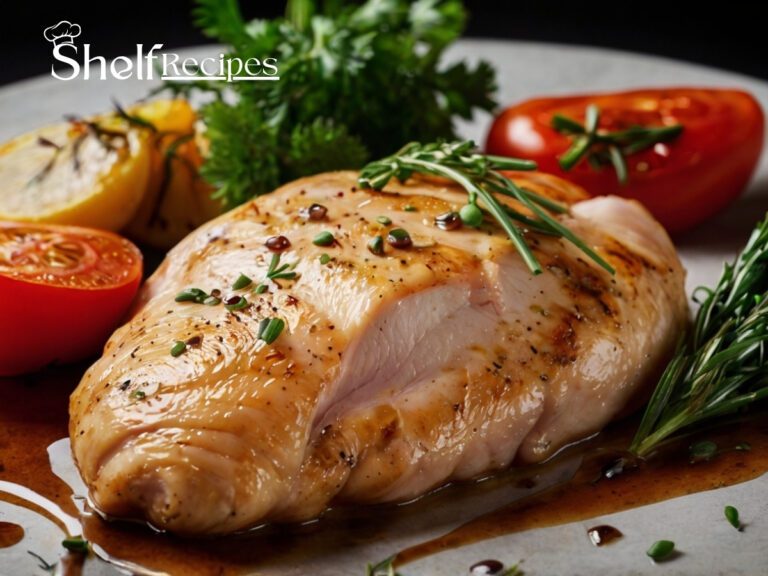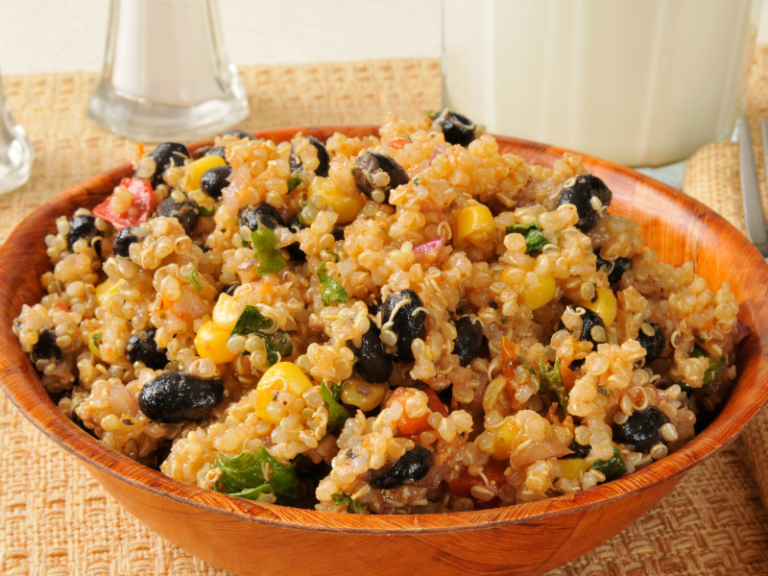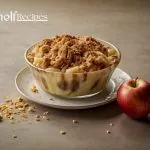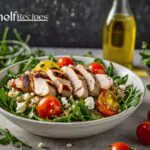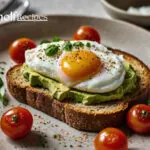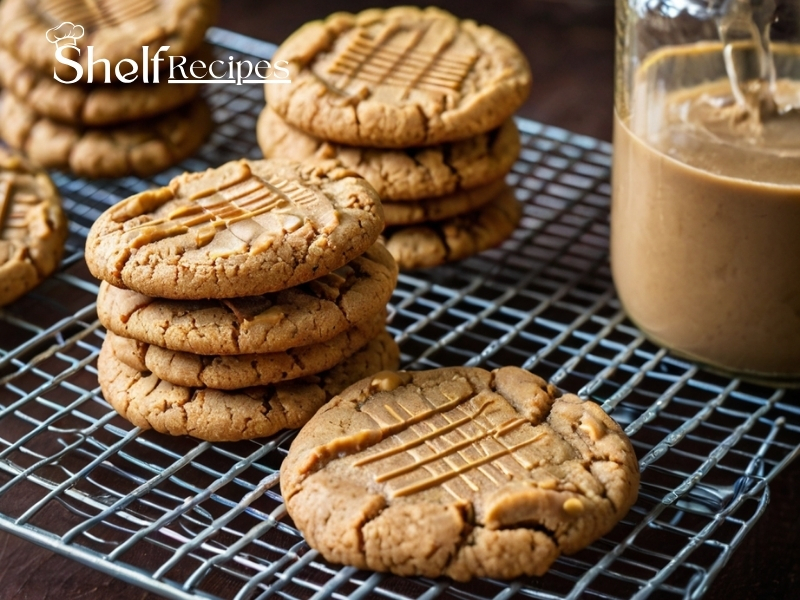
Introduction to Chewy Peanut Butter Cookies
There’s something undeniably comforting about the texture of a chewy peanut butter cookie. With a crisp exterior giving way to a soft, chewy center, these cookies are a timeless treat that delights both young and old. Here, we’ll share with you a foolproof recipe that ensures the perfect chewiness every time.
Table of Contents
Kitchen Tools List
Here’s a list of the essential kitchen tools you’ll need for making chewy peanut butter cookies:
- Mixing Bowls: For combining ingredients.
- Measuring Cups and Spoons: To accurately measure out your ingredients.
- Electric Mixer or Whisk: To blend the dough, a whisk can work if you’re doing it by hand.
- Baking Sheet: Preferably light-colored for even baking.
- Using parchment paper or a silicone baking mat: helps to avoid sticking and simplifies cleanup.
- Cookie Scoop or Spoon: For uniform cookie sizes.
- Fork: To make the classic criss-cross pattern on top of the cookies.
- Spatula: For scraping the bowl and handling cookies.
- Cooling Rack: To cool cookies without making them soggy on the bottom.
- Oven: For baking the cookies, of course!
Tips for the Perfect Chewiness
- Use Room-Temperature Ingredients: When all your ingredients are at room temperature, they blend more seamlessly. This reduces the risk of overworking your dough, which can make cookies tough. Room-temperature eggs and peanut butter will mix into a smoother, more uniform batter, contributing to that sought-after chewy texture.
- Don’t Overbake: One of the secrets to chewy cookies is understanding when to take them out of the oven. They should look just set around the edges but still soft and a bit undercooked in the center. Remember, cookies continue to cook on the baking sheet due to residual heat, so pulling them out at this stage ensures they cool into a chewy delight.
- Choose the Right Baking Sheet: Use a light-colored, non-stick baking sheet or line with parchment paper. Dark sheets can cause the bottoms of the cookies to bake faster, potentially hardening them before the rest of the cookie is done.
- Cool on the Sheet: Allowing your cookies to cool on the baking sheet for a few minutes before transferring to a rack helps in setting the chewiness. This step lets the cookies firm up slightly without drying out or becoming crispy.
Common Mistakes to Avoid
- Overmixing the Dough: The less you mix, the better. Overmixing activates the gluten in the flour, leading to a denser, less chewy cookie. Once your ingredients are just combined, stop mixing. The dough should still look a bit shaggy but hold together.
- Using Too Much Flour: This can be a silent killer of chewiness. Excess flour absorbs more moisture, drying out your cookies. If you’re measuring by volume, spoon the flour into your measuring cup and level it off with a knife to avoid packing it down. If possible, use a scale for precise measurements.
- Incorrect Peanut Butter: Not all peanut butter is created equal. Natural peanut butter, which separates, might not give you the consistency needed for chewy cookies unless stirred very well. Look for a brand with added oils for a smoother texture in baking.
- Ignoring Environment: Humidity and altitude can affect baking. If you’re in a very dry or high-altitude area, you might need to adjust baking times or add a bit more liquid to maintain moisture.
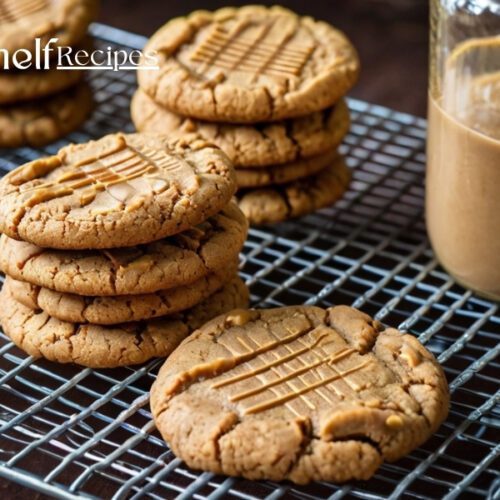
Chewy Peanut Butter Cookies
Ingredients
- 1 cup peanut butter creamy or crunchy
- 1 cup sugar
- 1 large egg
- 1 teaspoon vanilla extract
- 1/2 teaspoon baking soda
Instructions
Mixing the Dough
- Preheat your oven to 350°F (175°C).
- In a bowl, mix the peanut butter, sugar, egg, vanilla extract, and baking soda until well combined. The mixture should be thick but manageable.
Shaping the Cookies
- Scoop tablespoons of dough and roll them into balls. Place on a baking sheet lined with parchment paper.
- Flatten each ball with a fork, making a criss-cross pattern on top. This not only looks classic but also helps with even baking.
Baking
- Bake for about 10 minutes or until the cookies are lightly browned at the edges but still soft in the center.
- Cool on the baking sheet for 5 minutes before transferring to a wire rack to cool completely. This helps in achieving the chewy texture.
Tips for the Perfect Chewiness
- Use room temperature ingredients for better blending and texture.
- Don’t overbake – the cookies should look slightly underdone when removed from the oven as they will continue to cook on the sheet.
Common Mistakes to Avoid
- Overmixing the dough can lead to tough cookies. Mix just until ingredients are combined.
- Using too much flour can make cookies less chewy. Stick to the recipe’s measurements.
Serving Suggestions
- Serve warm with a glass of milk for the ultimate comfort snack.
- For an adult twist, pair with coffee or a dark chocolate drizzle for a gourmet touch.
Serving Suggestions
- Serve Warm with Milk: There’s nothing like the synergy between chewy peanut butter cookies and a cold glass of milk. The cookie’s warmth and the milk’s coolness create a comforting contrast that’s hard to beat.
- For an Adult Twist: Elevate your cookie experience by pairing them with a robust cup of coffee. The bitterness of the coffee complements the sweetness of the cookie. Alternatively, a drizzle of dark chocolate adds a layer of flavor and introduces a bit of crunch that contrasts beautifully with the chewiness.
- Ice Cream Sandwich: Turn your cookies into a delicious dessert by sandwiching a scoop of vanilla or chocolate ice cream between two cookies. The ice cream against the warm, chewy cookie is a match made in heaven.
- Party Platter: Arrange these cookies on a platter with various other desserts for a party or gathering. Their rich flavor and texture make them a standout choice alongside lighter options, ensuring there’s something for everyone’s taste.
Storage Tips
- Room Temperature: After your cookies have completely cooled, store them in an airtight container to keep them fresh and chewy. This helps prevent them from drying out or absorbing odors from other foods. They’ll remain at their best for up to 5 days, but you might find they’re still delicious beyond this period. If you notice they’re starting to lose their chewiness, a quick 10-second zap in the microwave can bring it back.
- Freezer: Freezing is a fantastic way to extend the life of your cookies. First, flash and freeze them by placing the cookies in a single layer on a baking sheet lined with parchment paper. Once they’re firm (this takes about an hour), transfer them to freezer-safe bags or containers. This prevents the cookies from sticking together. Label them with the date, and they’ll keep well for up to 3 months. When you’re ready to enjoy them, let them thaw at room temperature or reheat them in an oven at 300°F (150°C) for 5-10 minutes for that fresh-baked feel. For more detailed instructions, check out this guide on how to freeze cookies properly.
- Refrigerator: While not ideal due to potential hardening, if you prefer to store your cookies in the fridge, use an airtight container. They can last up to 10 days this way, but they might lose some of their chewiness.
Customization Ideas
- Chocolate Lovers: Elevate your peanut butter cookies by adding semi-sweet, milk, or even white chocolate chips or chunks. The combination of peanut butter and chocolate is iconic, offering a gooey, rich contrast to the peanut butter’s nutty flavor. Mix in about 1/2 cup of chocolate per batch, or adjust to taste.
- Nutty Variation: For those who adore nuts, incorporating chopped almonds, pecans, walnuts, or hazelnuts can add a delightful crunch and enhance the cookie’s flavor profile. Use about 1/4 to 1/2 cup of nuts, depending on how nutty you want your cookies to be. Toasting the nuts before adding them can intensify their flavor.
- Dietary Adjustments:
- Nut-Free: If peanut allergies are a concern, almond butter or sunflower seed butter can be a great alternative. Keep in mind that different jars of butter can alter the texture slightly, so you might need to adjust the amount of sugar or baking time.
- Lower Calorie/Sugar: Opt for natural sweeteners like stevia or erythritol for a lower calorie count. However, remember that these substitutes can affect texture and flavor, so you might need to adjust quantities. Also, using whole-grain flour or reducing the amount of sugar can make these cookies more diet-friendly.
- Gluten-Free: Easily make this recipe gluten-free by using a 1:1 gluten-free flour blend instead of regular flour.
- Flavor Twists: Consider adding spices like cinnamon or nutmeg for a warm, comforting twist, or swirl in some peanut butter caramel for an indulgent treat.
Baking for Special Occasions
- Shaped Cookies: Use cookie cutters to add a fun, unique touch to your cookies. Shapes like hearts, stars, or flowers can make your baking stand out. For best results, chill the dough slightly before cutting to help maintain the shapes.
- Gift Giving: Cookies are fantastic gifts when presented attractively. Place them in clear cellophane bags tied with a ribbon, or use decorative tins. Personalized labels with your name or a special message can enhance the gift. Including a handwritten recipe card or baking tips can make your gift a keepsake.
- Themed Events: Customize your cookies to fit the theme of any event, whether it’s a birthday, a family gathering, or a celebration. Use colors, shapes, or edible decorations like sprinkles or icing to match the event’s mood or theme.
Pairing Suggestions
- Beverages: While milk is a classic pairing, these cookies can be enjoyed with a variety of drinks. Herbal teas like chamomile or mint can provide a soothing contrast, or black tea for a more robust flavor. For coffee lovers, a cup of espresso or latte can complement the richness of the peanut butter. If you’re feeling adventurous, try pairing with a different beverage like herbal tea for an elegant dessert course.
- Dessert Plating: Elevate your cookie experience by creating an artful dessert plate. Serve your cookies with:
- Ice Cream: A scoop of vanilla, chocolate, or even peanut butter ice cream makes for an irresistible cookie sandwich or a side that cools down the warmth of freshly baked cookies.
- Fresh Berries: A pile of strawberries, raspberries, or blueberries brings a fresh, tart contrast to the sweetness and richness of the cookies.
- Whipped Cream or Caramel: A dollop of whipped cream or a drizzle of caramel sauce can add luxury to your presentation, making each bite a multi-textured experience.
- Cheese Board: For an unexpected twist, pair these cookies with a selection of cheeses like sharp cheddar or blue cheese; the saltiness can balance the sweetness beautifully.
Variations to Try
If you loved our Homemade Chocolate Chip Cookies, you’ll enjoy experimenting with these variations on our chewy peanut butter cookie recipe:
- Peanut Butter and Jelly Cookies: Add a teaspoon of your favorite jelly or jam in the center of each cookie before baking for a delightful surprise. This classic combo brings a burst of flavor that pairs wonderfully with peanut butter. Check out this guide for different PB&J pairings.
- Peanut Butter Oatmeal Cookies: Mix in 1/2 cup of oats for added texture and a hint of healthiness. Oats not only make the cookies heartier but also introduce a comforting, rustic feel. Learn more about the benefits of oats in baking.
- For a gluten-free version: replace all-purpose flour with a gluten-free flour blend. This variation ensures everyone can enjoy these cookies, regardless of dietary restrictions. For tips on baking with gluten-free flour, visit Gluten-Free on a Shoestring.
- Spiced Peanut Butter Cookies: Incorporate spices like cinnamon, nutmeg, or even a touch of cayenne for a warm or spicy twist. These spices can add depth and intrigue to the flavor profile of your cookies. Explore different spice combinations for baking.
- Peanut Butter and Banana Cookies: Mash a ripe banana into your dough for natural sweetness and a moist, cake-like texture. This version is perfect for those who love the banana-peanut butter combination. Here’s some inspiration from Tasty.
Each of these variations offers a new way to enjoy the timeless appeal of peanut butter cookies. Experimenting with different ingredients can lead to your own signature cookie recipe that friends and family will request time and time again.
Community Feedback
- Sharing Modifications: Encourage your baking community to leave comments about how they’ve altered the recipe or what unique ingredients they’ve included. Have they experimented with different types of peanut butter or added unexpected spices? This exchange not only fosters a sense of community but also provides a treasure trove of ideas for everyone.
- Experiences and Tips: Ask readers to share their baking experiences, especially any troubleshooting tips for common issues like cookies spreading too much or not being chewy enough. This can help everyone improve their baking skills.
- Secret Ingredients: Is there a special ingredient someone added that made their cookies stand out? Whether it’s a dash of sea salt, a sprinkle of cayenne for a spicy kick, or a unique type of sugar, hearing about these secrets can inspire others to get creative.
- Photography: Invite readers to post pictures of their cookie creations. This not only motivates others to bake but also provides visual inspiration for plating and decoration.
FAQs
Q: Can I make these cookies if I don’t have an electric mixer?
- A: Absolutely! While an electric mixer makes things easier, you can mix the ingredients by hand with a sturdy spoon or whisk. Just ensure you mix until well combined, but avoid overworking the dough.
Q: What if my cookies are spreading too much?
- A: This could be due to several factors:
- Your dough might be too warm; try chilling it for 30 minutes before baking.
- You might need to adjust your oven temperature; make sure it’s accurately preheated.
- Check your baking soda; if it’s old, it might not be as effective.
Q: How do I achieve the perfect chewiness?
- A:
- Use room temperature ingredients.
- Don’t overbake; take the cookies out when they look slightly underdone.
- Allow them to cool on the baking sheet for a few minutes before moving them to a cooling rack.
Q: Can I double the recipe?
- A: Absolutely, you can double or even triple the recipe. Just be mindful that larger batches might require a bit more mixing time and potentially a few extra minutes of baking. Also, ensure your mixing bowl is large enough to handle the doubled ingredients.
Q: What can I use if I don’t have parchment paper?
- A: You can use a silicone baking mat, or lightly grease your baking sheet with butter or non-stick spray. Aluminum foil can work if greased, but cookies might stick more easily.
Q: How do I store leftover dough?
- A: Wrap the dough tightly in plastic wrap or place in an airtight container and refrigerate. It can be stored for 3-5 days or frozen for up to 3 months. Let it soften at room temperature before baking.
Q: Is it possible to use natural peanut butter in this recipe?
- A: Yes, but natural peanut butter can be oilier and less consistent, so stir it well before using. You might need to adjust the amount of sugar or flour slightly to compensate for the moisture.
Q: What’s the best way to reheat leftover cookies?
- A: For that fresh-baked texture, reheat in an oven at 300°F (150°C) for about 5 minutes or until warm. Alternatively, a quick 10-second burst in the microwave can revive their chewiness.
Conclusion
Chewy peanut butter cookies are a simple joy that never goes out of style. With this recipe, you’re equipped to bake cookies that are not only scrumptious but also have that perfect chew everyone craves. Remember, the key to great baking is in the details – from the quality of your peanut butter to the exact timing of when you pull your cookies out of the oven.
Have you tried making these cookies? What’s your secret to perfect chewiness?
If you’ve enjoyed this recipe or have a new twist to share, please leave a comment below!

